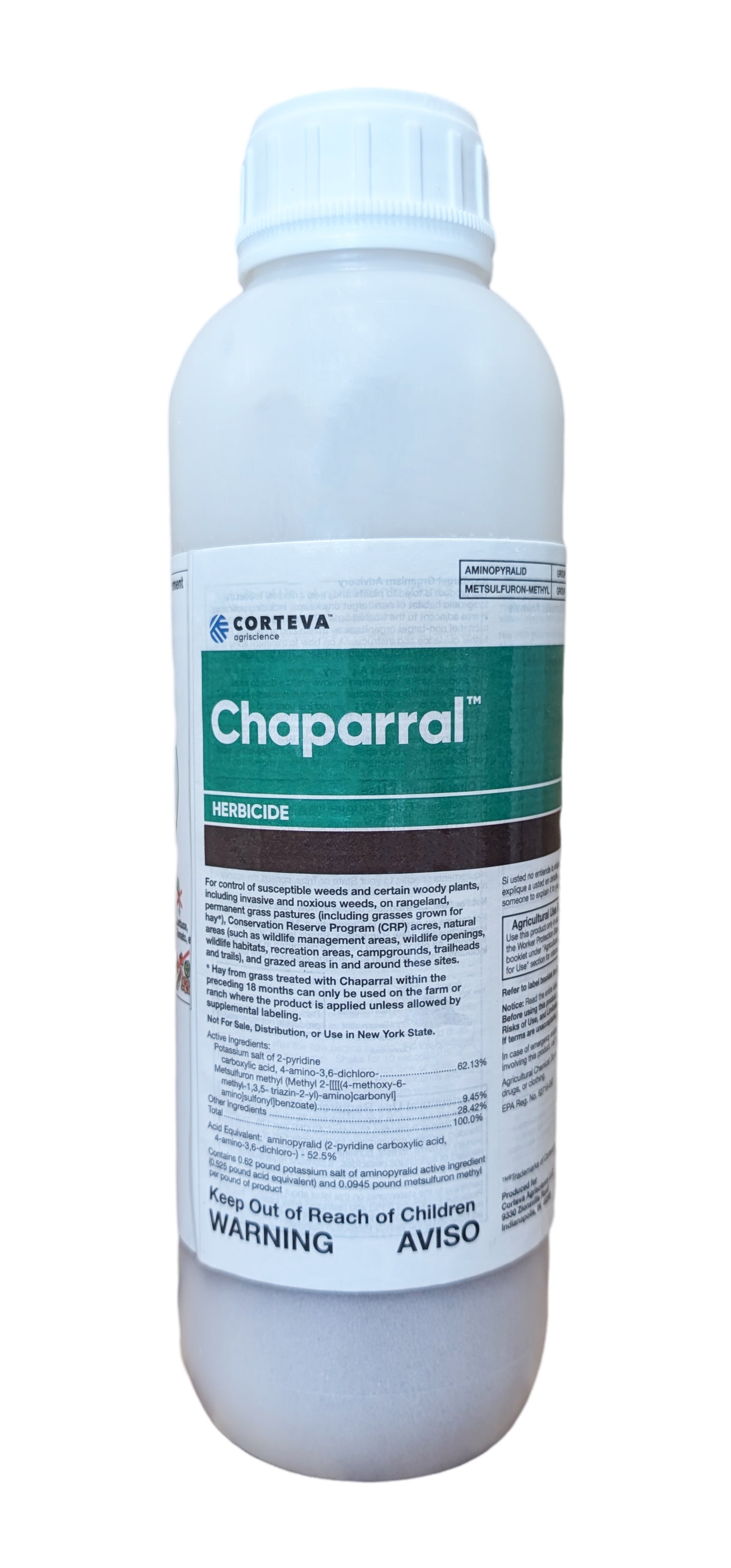Description
- Description
- Features and Benefits
- Specs
- Labels and SDS Forms
Chaparral Herbicide is the ultimate broad-spectrum solution for controlling weeds and brush on pastures and rangelands. This highly effective herbicide eliminates hard-to-kill weeds, including buckbrush, pigweed, Pensacola bahiagrass, and blackberry, without the need for tank mixing. Beyond weed control, Chaparral enhances forage production and improves hay quality by removing invasive species such as toxic fescue and Pensacola bahiagrass. With a wide application window, residual activity, and proven efficacy on woody plants and broadleaf weeds, Chaparral is a game-changer for pasture and rangeland management.
- Broad-spectrum control of weeds and brush, including buckbrush and blackberry
- Improves forage quality and supports better cattle health and performance
- Eliminates the toughest weeds, such as pigweed, hoarycress, and Canada thistle
- Suppresses toxic fescue seedheads to reduce fescue toxicosis
- Enhances hay quality by removing invasive Pensacola bahiagrass
- Offers a wide application window for flexibility
- Provides residual weed activity for long-lasting results
| ACTIVE INGREDIENT | Potassium salt - 62.13 & Metsulfuron methyl - 9.45 % |
| TARGET PESTS | Actinomeris, alyssum, aster, bedstraw, broomweed, burclover, buttercup, camphorweed, chamomile, chickweed, cocklebur, daisy, dandelion, dock, fleabane, gumweed, hawkweed, hogweed, lettuce, plantain, ragweed, snakeweed, thistle, yarrow. |
| FOR USE IN | Rangeland, permanent grass pastures (including grasses grown for hay), CRP acres, natural areas (such as wildlife management areas, wildlife opening, wildlife habitats, recreation areas, campgrounds, trailheads, and trails) and grazed areas in and around. |
| APPLICATION | Aerial and ground broadcast, spot. |
| MANUFACTURER | Corteva Agriscience |
| EPA REGISTRATION | 62719-597 |
| NOT FOR SALE TO | AK, CA, CT, DE, HI, ME, MD, MA, MI, NH, NJ, NY, RI, VT |
Payment & Security
Your payment information is processed securely. We do not store credit card details nor have access to your credit card information.












